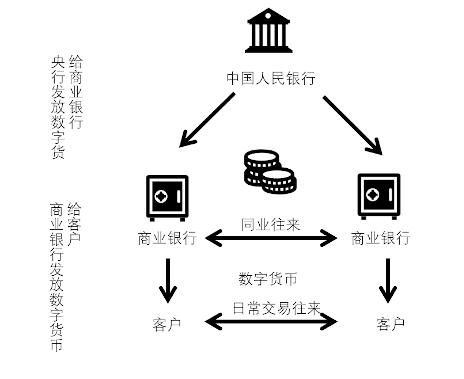As the frigid winds of Norway sweep across its rugged landscapes, an equally chilling surge is occurring beneath the surface—the relentless hum of ASIC miners clawing at the cryptographic puzzles of Bitcoin and other digital currencies. Norway, with its abundant renewable energy and cool climate, has emerged as a sanctuary for mining operations seeking both efficiency and sustainability. The future of ASIC (Application-Specific Integrated Circuit) miners here is not just a tale of hardware but a complex narrative intertwining technological evolution, market dynamics, energy policies, and global cryptocurrency trends.
ASIC miners, designed specifically to execute the SHA-256 hashing algorithm used by Bitcoin, have carved out their niche as the ultimate workhorses of proof-of-work (PoW) mining. But what does 2024 hold for these specialized machines in Norway? To fully grasp the pricing predictions, one must consider the interplay of supply chain challenges, advancements in semiconductor manufacturing, and the shifting economics of mining farms nestled in the Norwegian fjords.
At its core, the cost of ASIC miners is influenced by chip fabrication innovations, which oscillate between marginal improvements in energy efficiency and leaps in processing power. The semiconductor industry faces constraints such as droughts impacting water for chip production and geopolitical tensions affecting material supply. Such hurdles can drive up costs, translating into higher price tags for miners. Conversely, breakthroughs in wafer-scale integration or novel cooling techniques may prove deflationary, enhancing mining rigs’ performance while lowering their long-term operational expenses.

Norway’s unique advantage lies in its near-limitless clean hydroelectric energy, which substantially lowers electricity costs—a primary expenditure in mining operations. This advantage strengthens the country’s appeal as a hosting hub for mining rigs. Hosting services, which provide space, power, cooling, and maintenance for miners, thrive under these conditions. The symbiosis between miners seeking to capitalize on affordable energy and providers offering turnkey solutions creates a vibrant ecosystem, which is pivotal for the pricing trajectory of ASIC miners. If hosting fees become more competitive or the energy market sees favorable regulations, the overall cost of running mining equipment drops, indirectly affecting the demand and pricing of ASIC units.
Diving deeper, the propitious integration of Norway’s climate and renewable energy infrastructure also curtails overheating issues prevalent in warmer regions. This environmental cooling effect preserves the lifespan of mining farms’ ASIC devices, reducing depreciation rates. Consequently, miners may hesitate to upgrade rapidly, leading to a more stable secondary market price for used machines. Such dynamics inject complexity into pricing trends, oscillating between new unit premiums and the viability of secondhand rigs.
The cryptocurrency market itself wields significant influence over ASIC miner valuations. The volatile price swings of Bitcoin (BTC) and Ethereum (ETH), alongside emergent altcoins, shape miners’ profitability projections. For instance, a bullish forecast for BTC in 2024 could spur robust demand, raising ASIC miner prices as investors scramble to expand their mining fleets. Conversely, prolonged bear markets could saturate the market with used equipment, depressing new miner prices. Ethereum’s ongoing transition toward proof-of-stake reduces demand for ETH-specific mining rigs but could redirect capital toward Bitcoin ASIC miners, subtly reshaping ASIC hardware economics.

On the horizon, innovations like chip-level AI optimization and liquid cooling integration might further redefine what miners expect from ASIC machines in Norway. These technologies can significantly enhance hash rates while minimizing energy footprint, aligning perfectly with Norway’s sustainable ethos. The knock-on effect would be twofold: initial prices may command a premium due to cutting-edge features, but operational costs plummet, lengthening return-on-investment horizons for miners and hosting providers alike. This paradigm shift encourages long-term capital allocation, embedding Norway even more securely in the global mining narrative.
Moreover, regulatory frameworks within Norway and the European Union play a subtle yet pivotal role. Increasing emphasis on carbon neutrality and electronic waste management might impose stricter norms on mining farms, influencing how mining clusters are designed and operated. Compliance-related costs might marginally increase the overall expenses associated with ASIC miners, impacting their pricing. However, the country’s commitment to clean energy and technology innovation provides a fertile ground for public-private partnerships and incentives, potentially offsetting such costs and nurturing a balanced, growth-oriented mining sector.
One cannot overlook the sociocultural dimension shaping the future of mining in Norway. With heightened awareness of environmental impact, transparency in mining operations gains traction, appealing to investors favoring “green” digital assets. Miners may incorporate blockchain solutions to report carbon footprints and operational efficiencies—a move that, while adding short-term costs, enhances brand value and investor confidence. This reputational boost might influence ASIC miner sales positively, fostering a market where eco-consciousness and profitability coexist.
In conclusion, the pricing predictions for ASIC miners in Norway throughout 2024 are a mosaic of technological progress, energy economics, cryptocurrency market forces, regulatory environments, and cultural shifts. While challenges loom—chip shortages, market volatility, and regulatory scrutiny—the confluence of Norway’s renewable resources, innovative hosting infrastructure, and the relentless human drive for optimization paints an optimistic picture. For miners, hosts, and investors eyeing this Nordic haven, understanding these intricate layers is crucial. The future promises not just survival but a refined, resilient mining ecosystem where ASIC miners continue to play their cardinal role amid the fjords and frozen landscapes.
One Comment
The article offers a compelling analysis of the ASIC miner market in Norway, projecting an intriguing blend of pricing trends and technological advancements for 2024. It deftly examines factors such as energy costs, regulatory changes, and market demand, making it essential reading for investors and enthusiasts alike.